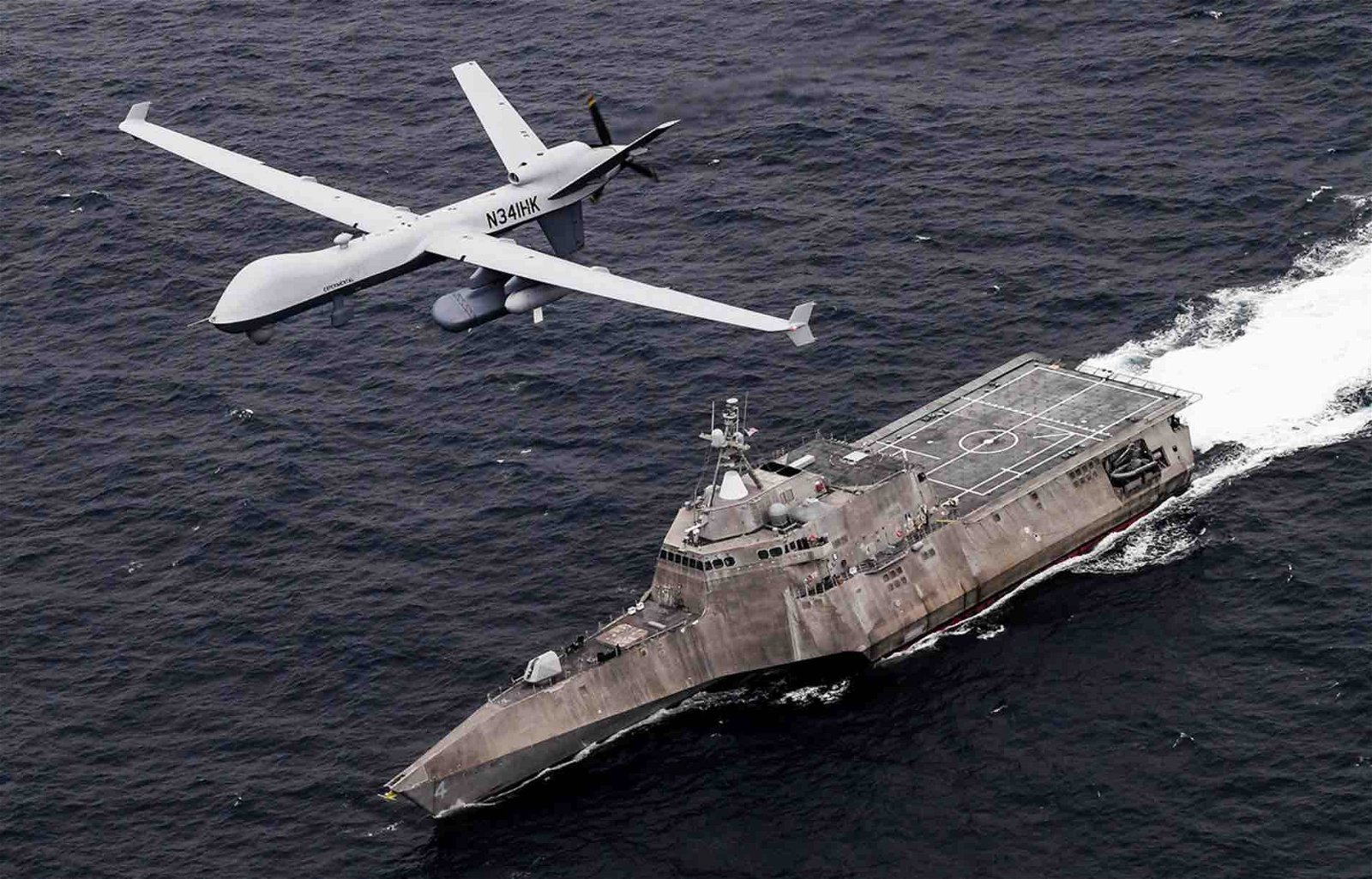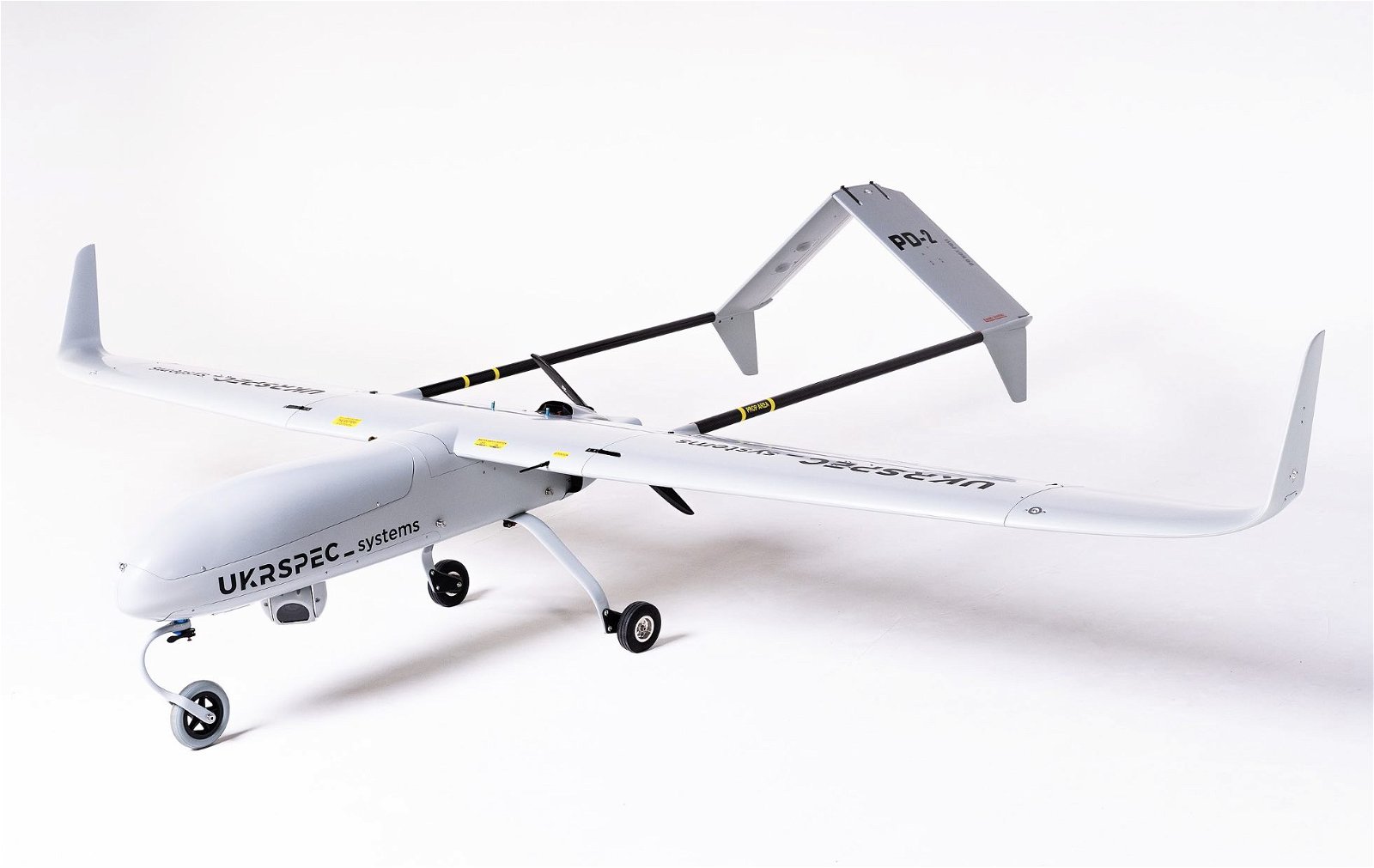

Welcome to this week’s Intelligence Brief… over the last several days, we have learned about a new initiative launched by the Department of Defense that aims to develop unmanned systems at scale, in response to mounting military concerns stemming from the East. In our analysis this week, we’ll be looking at 1) how the DoD aims to leverage autonomous systems in ways similar to how past innovations have shaped the U.S.’s response to military challenges, 2) the new Replicator initiative, and what it aims to do, 3) why Ukraine is an excellent case study for what the DoD aims to achieve, and 4) AI in the DOD’s new efforts to match the PRC.
Quote of the Week
“Replicator signals from the top that we are embarking on audacious change — fast — using the means we have. We face an urgent challenge, and we intend to meet it with the courage to bet big.”
– Dr. Kathleen Hicks, Deputy Secretary of Defense
Latest News: In recent coverage from The Debrief, take a look at what NASA’s Lunar Reconnaissance Orbiter just photographed on the moon… elsewhere, we look at how psychedelic neural hypersynchrony could revolutionize our understanding of consciousness, according to a recent groundbreaking study. You can find all our latest headlines at the end of this week’s newsletter.
Podcasts: In podcasts from The Debrief, this week on The Debrief Weekly Report, MJ and Stephanie discuss China’s claim that they can detect US submarines and how long-term living in space will kill you. Meanwhile on The Micah Hanks Program, we take a deep dive into an observation of a large, unidentified triangular aircraft over Michigan in 2018. You can subscribe to all of The Debrief’s podcasts, including audio editions of Rebelliously Curious, by heading over to our Podcasts Page.
Video News: On the latest episode of Rebelliously Curious, Jim Smith, Professor of Environmental Science in the School of the Environment, Geography, and Geosciences at the University of Portsmouth, joins Chrissy Newton to discuss the science and what we should know about radioactive wastewater. Also, check out the latest episode of Ask Dr. Chance where Dr. Glenn answers questions about climate change. You can get other great content from The Debrief on our official YouTube Channel.
And now, it’s time that we take a look at the new AI drone initiative the Pentagon is undertaking, and how it could potentially be a game changer in the years ahead.
Power Through Innovation
At a Defense News Conference held earlier this week, Deputy Secretary of Defense Kathleen Hicks addressed the necessity for innovation in the use of AI and autonomous technologies in light of concerns arising from strategic competition with the People’s Republic of China.
Presently, China’s People’s Liberation Army (PLA) represents the world’s largest military force, excluding paramilitary or reserve forces. Current efforts to modernize the Chinese military include its development of capabilities for control over near-sea regions, as well as the modernization of its air force fleet, much of which is based on decades-old technologies.


However, last year, China is believed to have spent close to $292 billion on enhancement and expansion of its military, constituting 13% of the world’s total defense expenditures for 2022 and ranking second behind the U.S. as the world’s largest defense budget. With its ambitions for growth, Hicks said during the recent lunchtime speech that America’s ability to match that progress will rely on innovation.
“Our ability to deliver innovation at scale is not a pipe dream,” Hicks said during her talk. Citing commercial industrial advancements that out-built the Axis powers during World War II, Cold War efforts that integrated technologies “to strike targets with pinpoint accuracy,” stealth aircraft development and GPS technologies employed during the Gulf War, and technologies that shielded vehicles from roadside bombs on the post-9/11 battlefield, Hicks said all of these past innovations were the result of an operational need at that time.
“We have one of those moments right now, and we’re going to seize it,” Hicks said.
The Replicator Initiative
Hicks’ recent statements followed her previous announcement last week of a new Defense Department initiative called Replicator, an AI drone program to be overseen by the Defense Innovation Unit that aims to leverage both existing and new experimental drone technologies for a variety of solutions on the battlefield.
“Last week, I announced our Replicator initiative,” Hicks said this week, “the latest effort to overcome the production valley of death, beginning with accelerating the scaling of all-domain attritable autonomous systems.”
Hicks emphasizes that Replicator is not a new program, nor does it represent “a new bureaucracy” that will result in additional expansion to the DOD’s 2024 budget allotment.
“Not all problems need new money,” Hicks said. “We are problem-solvers, and we intend to self-solve.”
As Hicks explains, “Replicator will use existing funding, existing programming lines, and existing authorities to accelerate production and delivery at scale — by exerting leadership focus and attention on a singular operational challenge and maturing solutions, because that’s what ultimately delivers.”
“With Replicator, we’re beginning with all-domain, attritable autonomy, or ADA2, to help us overcome the PRC’s advantage in mass: more ships, more missiles, more forces.”
Ukraine: A Case Study
A point Hicks emphasized while speaking this week had been that despite the military advantages Russia had at the onset of its invasion of Ukraine last year, the defending nation’s employment of inexpensive technologies that include drones has provided an illustrative example of just how formidable they can be.
Hicks told the audience during her speech this week that such low-cost technologies can “help a determined defender stop a larger aggressor from achieving its objectives, put fewer people in the line of fire, and be made, fielded, and upgraded at the speed warfighters need, without long maintenance tails.”


The Pentagon, Hicks added, has already been investing in autonomous systems for use in multiple domains, which include autonomous sea vessels, unmanned aircraft, drones, and other technologies.
“Now is the time to scale, with systems that are harder to plan for, harder to hit, and harder to beat than those of potential competitors,” Hicks said, emphasizing that while the DoD recognizes the need for development in these areas—especially in light of military advancements occurring in China—the Department also gives consideration to the ethics of using AI and autonomous systems.
AI, the DoD, and the PRC
Earlier this year, the DoD launched its new generative AI task force, aimed at helping guide the development and implementation of AI throughout the U.S. military and intelligence community. Officially dubbed Task Force Lima, the initiative is focused on the analysis of large language models and their applications for software systems utilized by the military.
Along with its ethical implementation of AI technologies, Replicator is aiming to field autonomous systems at scale, numbering “multiple thousands, in multiple domains, within the next 18-to-24 months,” Hicks said, adding that large-scale production is not the only objective of the new initiative, but also focusing on replication of the most economical and effective production methods.


“All-domain, attritable autonomous systems will help overcome the PRC challenge of anti-access, area-denial systems,” Hicks said this week. “Our ADA2 to thwart their A2AD.”
Along with existing U.S. systems, “Replicator will galvanize progress in the too-slow shift of U.S. military innovation to leverage platforms that are small, smart, cheap, and many,” Hicks said.
That concludes this week’s installment of The Intelligence Brief. You can read past editions of The Intelligence Brief at our website, or if you found this installment online, don’t forget to subscribe and get future email editions from us here. Also, if you have a tip or other information you’d like to send along directly to me, you can email me at micah [@] thedebrief [dot] org, or Tweet at me @MicahHanks.


Here are the top stories we’re covering right now…
- Look What NASA’s Lunar Reconnaissance Orbiter Just Spotted on the Surface of the Moon
Can you spot the small object with the white halo in this image? Here’s what NASA’s Lunar Reconnaissance Orbiter just photographed on the moon.
- Breakthrough Discovery of New Water Splitting Method Allows Easier Production of Hydrogen
A new method of water splitting that allows hydrogen to be produced more easily has been discovered by a team of German chemists.
- New Quantum Random Number Generator Uses This Novel Material to Enable Stronger Cybersecurity
The development of a new kind of random number generator for use with encryption technologies could help ensure safer exchange of information.
- This Next-Generation Humanoid Robot Could Soon Be Your New Coworker
Apollo, a new humanoid robot designed to work alongside humans, is poised to reshape the industrial workforce.
- Is There Life on Mars? This week on The Debrief Weekly Report…
SUBSCRIBE TO ‘THE DEBRIEF WEEKLY REPORT’: Apple Podcasts | Spotify On today’s episode, we discuss China’s claim that they can detect US submarines, how long term living in space will kill you, and why one researcher thinks the 1976 Viking landers on Mars did collect evidence of life on the Red Planet, and then accidentally killed it. You can listen to the episode on Apple Podcasts, Spotify, by riding some gravity waves, or simply download it wherever you get your podcasts. Please make […]
- These Enigmatic Viking Symbols, Used in Ancient Encrypted Messages, Keep One of History’s Strangest Language Secrets
Why part of an ancient set of Viking symbols strangely vanished around 700 A.D. remains one of history’s most perplexing linguistic mysteries.
- Reconstructing the First Interstellar Meteor
Now that the composition of the first suspected interstellar meteor IM1 has been measured, can aspects of it be recreated in the lab?
- Mysterious Dark Matter Could Interact with Gravity Non-Locally, New Research Suggests
Dark matter, the mysterious nonluminous material thought to populate close to 85% of the universe’s matter, may interact with gravity in a non-local way, according to newly published research.
- The All-domain Anomaly Resolution Office Has Finally Launched Its Official Website. Here’s What’s Missing.
The All-domain Anomaly Resolution Office (AARO) that oversees the Pentagon’s investigations into UAP finally has its own website.
- The DOD Taps AI to Monitor Washington D.C.’s Airspace, and AARO Gets a New Website
This week, we look at the DOD and its plans to use artificial intelligence (AI) to help monitor the airspace over the nation’s capital.
- Aerial Threats Over the United States
This week, we look at recent UFO sightings logged by American pilots involving harrowing encounters with strange objects they couldn’t identify.
- New Video Shows High-Speed AI-Controlled Drone Beating Top Human Pilot Racers for the First Time
An AI-controlled drone just beat the best human pilots in a first-person view drone race, a feat that previously seemed impossible.
